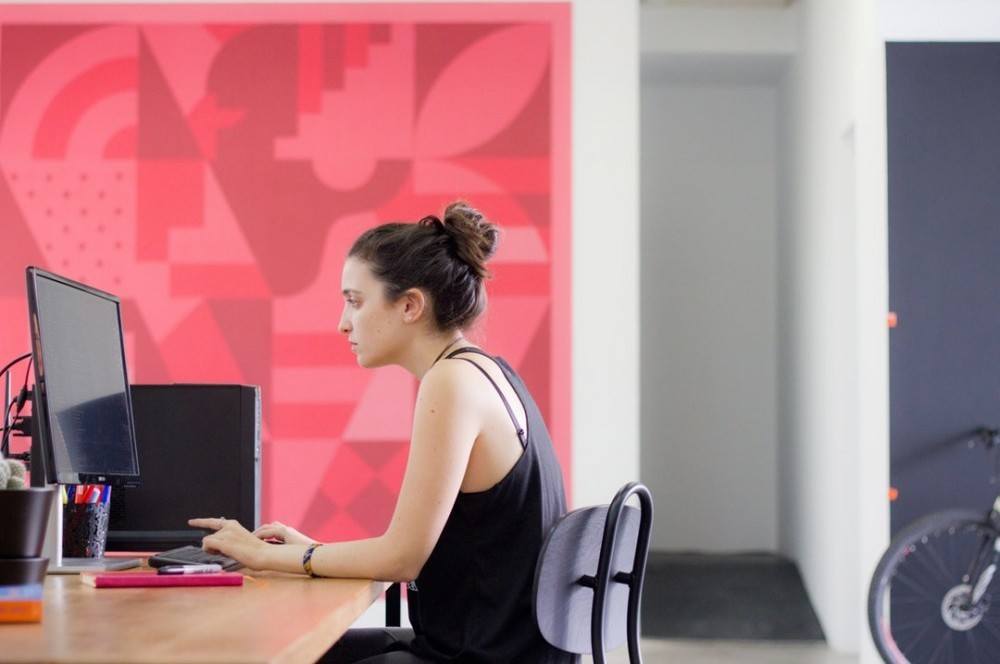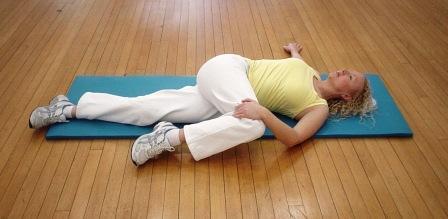Did you see it?

Here is the thing…
Just because you can’t always see your lower back pain visually from afar, doesn’t mean it’s no there.And in no way, shape or form am I talking about a ghost, in fact its more trivial.
For the over 80% of us that will suffer with a lower back pain at least once in our lives, we will neglect to go about our treatment as its intended. We’ll act in disappointment, anger, and quite frankly bitch. And how far does that get us?
NO WHERE. I didn’t see it coming, but I sure felt it! But enough about how you can and can’t see back pain coming, let’s talk about the real reason we are gathered here today, and that’s how to get rid of a bad back at school.
Having a bad back alone can be a rocky road, but when you are faced with the reality of real life responsibilities, a lower back pain takes on a whole new jigsaw.
Your attention should be 110% on your studies, not with your head literally in your book as you sit there holding your back waiting for immediate help. With the end of the summer not too long ago, your children or you as the adult might have exhausted themselves running up and down all summer long, or overworked themselves to the bone.
Whichever one it is, or whether you’re ready to get back to school, its vital that you pay close attention to your:
- muscles
- joints
- ligaments
- and spinal conditions
In this article I’m going to cover the following:
1. What types of pain are common in young adults and adults
2. What not to do
3. What you should be doing
So let’s jump right on in!
Young Breed To Adulthood, A Prolific Time
Back pain is more common in adults 20 and over, then it is for lets say someone who is in their early to late teens, or just under the age of 10. Just seconds ago we left off with talking about muscle, joints, ligaments, and spinal conditions, and that’s where we will continue.
While simple muscle strains and sprains are not a common thing in children, more serious conditions like:
…Are a very concerning diagnosis as kids transition into adulthood. In fact, kids over the age of 12 years old are at an increased risk of having a back problem compared to those below that threshold, and its true that about 1/3 of teenagers will suffer with reoccurring lower back pain at some point. And here are the reasons why:
1. Concentrating all their efforts on one activity or sport.
I remember it like it was not even a day ago that I was working my butt off playing soccer as an 11 year old boy. At the time I was training like 2-3 times a week for at least 2 hour sessions, and within these couple of hours I’d be:
- running/conditioning
- doing speed drills
- control drills
- dribbling skills
- small sided games
There wasn’t a time I couldn’t remember it not being rough, after all, I was playing against kids older than I was, and we were training hard at a premier level. I usually ended up with more side-aches then I did back problems apparently, but every now and then I would get an onset of right lower back pain. Why?
“Was I not good enough? Did I have too much weight?”…
Maybe I wasn’t good enough yet, and I was a little chubbier at the time, but nonetheless it was not for the two reasons primarily. It was because of frequency, and the duration of my training. I would frequently twist and turn my body, and I was training some nights harder than others.
The key takeaway is that you shouldn’t be doing excessive exercising, and improper techniques need to be addressed. Core strengthening activities as well as hamstrings and hip stretches should be considered on a daily basis if your child is to be working out regularly.
I’ve learned that children shouldn’t specialize in one particular sport or activity, and that they should do a lot of cross training up until they get to their early teens, and this is because they need their body to develop evenly across every area. And for the simple fact that their bone density and strength is far less structured than someone in their teens and in their adult years.
In adults:
Are you heading to your first class of the day, but you can already feel the agony start to set in as you’re just feet from your classroom door? Or maybe its after sitting for an extensive amount of time that you’re lower back can not bear to hold onto much longer.
On the opposite side of the spectrum, adults have more of a controlled presence when it comes to exercising. We are aware of our bodies more, and we can calculate how much force to put on end of our body as oppose to the other, but if we’re not careful, our bodies can crack at an instant.
What You Shouldn’t Be Doing At School
Let’s imagine you’re just waking up, and you’re getting ready to put your clothes on, breakfast is waiting for you in the kitchen, and now all you need is to place your backpack on. If I asked you, where in these steps could something go wrong, which one would you have answered?
Well that depends on a couple of factors:
- What are you wearing?
- Did you eat a nutritious meal?
- Is your backpack heavy?
The last one is more so important than the rest in young adults.Many students are still carrying way too much weight inside their backpacks, it’s utterly insane!
With the increase in technology, backpacks don’t only hold binders, notepads, or pencils, in fact they can be replaced with e-books, iPad’s, Laptops, and on top of the binders for each class(at least It was like that for me), there’s no question why your child has come home to you with a bad back.
Other kids routinely are lugging backpacks with about 30% or more of their own body weight. The math is easy to see.
What to do: As our guidelines, make sure that your child is carrying no more than 10%-15% of their own body weight. The body mechanics of carrying a backpack is just as important…
Here’s a step-by-step action you can take to make sure your child’s backpack is set up correctly:
STEP 1: Choosing the right backpack. A good and even great backpack will have two things in common- They have cushioned shoulder support, and the weight is evenly distributed. I used to carry around those Jansen backpacks as a teenager, and I would stuff binders and my lunch-bag towards the very back end of it, but I was doing it all wrong.
What you want to do is make sure that first the shoulder straps have enough padding for your shoulders, otherwise if they don’t, the shoulders will weaken, and that will transfer kinetic energy down into the lower back.
STEP 2: Pull the load in.Next, make sure to pack all the heavier weight towards the inside of the backpack, this way the weight is distributed going forward and not down and back-as if it were loaded towards the front of the backpack.
Following just these two steps will ensure that your child does not stress their muscles, and ensures they have a great chance of staying away from a muscle strain and or sprain.
>> You can learn more about travel with backpacks and the type of bags that work best here.
Here are more pieces to the puzzle to put your attention to:
2. Look at your footwear

What are your shoes looking like? Are they sandals, are the heels all torn up, do your shoes offer extra padded support?
It’s ever so increasing that children and even adults want to talk flip flops to school(very common in college students), but they are less ideal for being able to walk around campus, class to class, and its very easy to trip and fall on them. If you already have a bad back, its very important that you don’t go for the sandals.
If you want to wear them for the dorm room or at home, go right ahead, and choose to wear a pair that are more comfortable and are going to offer arch support.
For women: Substitute the heels for a flatter footwear with arch support.
For Men: Lose the tight shoes like converse, and use Flatter footwear with arch support.
3. Don’t Worry, Be Happy.

The power of being positive can really be overshadowed by a rainy cast of feeling overhauled by their schoolwork. I understand the pressure of having to excel, and the excessive pressure that comes with trying to get an A on your next homework and exam, but only one time is enough to set off a snowball of stress later down the road. Not to mention it can:
- Cause neck pain
- Muscle tension and pain
- Prolonged sitting at the desk
None of these are a good sign, and you will eventually begin to feel the pain radiate into your lower back. The truth is that a persons emotional well being contributes so much to understanding how to cope with stress, anxiety, depression, guilt, and isolation. And all this can lead to weight gain, and loss of bone and muscle strength all at the same time.
One of the major reasons for chronic lower back pain is emotional pain. Something as little as a feint of stress can trigger chronic back pain.
According to Joseph Hullet, MD:
“Cognitive behavioral therapy helps provide pain relief in a few ways. First, it changes the way people view their pain. “CBT can change the thoughts, emotions, and behaviors related to pain, improve coping strategies, and put the discomfort in a better context,” Hullett says
What to do right now: Encourage your kid or yourself to exercise maintaining physical fitness levels. This will help curb off the stress, and reduce any weight if need be. These regular habits, can decrease the chance of a child or adult getting lower back pain in the future.
4. Poor Posture

To me Enemy number 1 has to be posture. Kids are learning so many new things now in school, from interactive group activities, to PE, but one thing they are forgetting is how to sit up straight. So many students who slump forward and sit basically with their chest on their desk will have an increase for neck and back pain. Did you know that when we sit down, or spinal disc between our vertebra are compressed?…
This means that they are not getting enough oxygen, not enough water to lubricate the disc, and we tighten up more of our muscles. So every now and then its important that you take a break from what you’re doing. Here’s what you can do:

- Stand up
- Put two hand in the air
- Get on your tipy toes, and reach as high to the ceiling
- Hold it for at least 5 seconds
Or the second variation to that is the one in your chair:

The next stretch you can be done directly in the classroom if you find space and time to do so, but if not, and you have PE, recess, or time outside of class do this:

How to do:
- Find a surface to lay on your back
- With your right leg, cross it over the left side of your body.
- Keep your back facing as straight as possible
- Extend your arms out
- Hold it for 30 seconds
- Switch sides and repeat
>> See how to fix your posture in less than a day here.
5. Clothing.

That’s right, clothing can be one of the reasons why you’re back is aching during your math, english, or any class for that matter. You’ve already set yourself up for distress before you walked out the front door of your home, can you believe that?
Well, as harsh of a reality as that is, there is a way to fix it!
But first we have to ask, why clothing? Just think about it…
If I wore like a heavier weighted jacket, it’s likely that I;m going to have trouble moving around in it. My mobility will be limited, and my movements will never turn out to be uniform, rather skewed more to one end. This alone will be enough to keep my muscle stiff, thus causing muscle stiffness, and immediate inflammation.
Your back is in direct proportion with your movement, and your muscles and joints are only as good as you make them be.
So make sure that your clothing isn’t too tight, and that you can actually breathe in it. Its studied that for people who spend on average over 30 minutes of sitting at a time, have more trouble with back aches than those standing. What does this tell you?
That even if you shifted your weight while sitting, you would still have to stretch once in a while, and with clothing that limits your mobility, the aches will come by even faster.
STEP 1: Think about the weather. What does it look like outside? Is it sunny, rainy, windy? When its cold, its easy to add extra layers in the region of your upper torso. What I want for you to do is to pick out a comfortable shirt, get a rain coat or your favorite medium to heavy jacket.
STEP 2: At school, hopefully in your classroom its much warmer, so you can just take off your jacket and lay it over your seat or somewhere close. Doing this will let your motion become more regular and “lubricated” per say.
>> Go here if you’d like to learn more about staying warm in the cold weather.
If its sunny out:
When the sun is out, it can be a really good sign that you’ll have better mobility and activity, but you also have to be careful with your movements, because if you have more of an extreme spinal problem, you have to approach it with a lower impact.
STEP 1: Dress appropriate. A shirt, jeans, shorts, and flat shes with arch support are usually the way to go.
STEP 2: In between classes, try to hang outside, and take a breathe. This would also be a good time to stretch your lower back muscle and joints. I used to do just about every single day in high school and college.
STEP 3: Sit straight up in class. Make sure that your spine is erect, and that you’re not hunching forward or backwards. If you have know your pain is persistent, it would be a great idea to do some of the stretches outlined above. Do them after 30 minutes.
Taking It A Class At A Time
So that’s pretty much all of it, if you can cover each and every one of these aspects to treating your back before during and after school, you will be set for true freedom from an ache and pain.
There are many easier ways to resort to like taking drugs(NSAIDs, acetaminophen), but I want to stay clear away from them as much as possible. The reason being is that they can change your focus and concentration, and distract you with more negative effects like:
- nausea
- drowsiness
- dizziness
- and many more!
But if you do use them, only do so short term. You can learn more about these relief medications here if need be.
Remember that your back is both triggered by inflammation and mechanically(your lumbar spine), so its important that to stay clear of inflammation, you should always make sure your back is conditioned and has proper posture. You can work on your posture more by checking out my article right here.
I would appreciate your feedback on how you think I did. Please leave me a comment below, I usually get back in a couple of hours.
